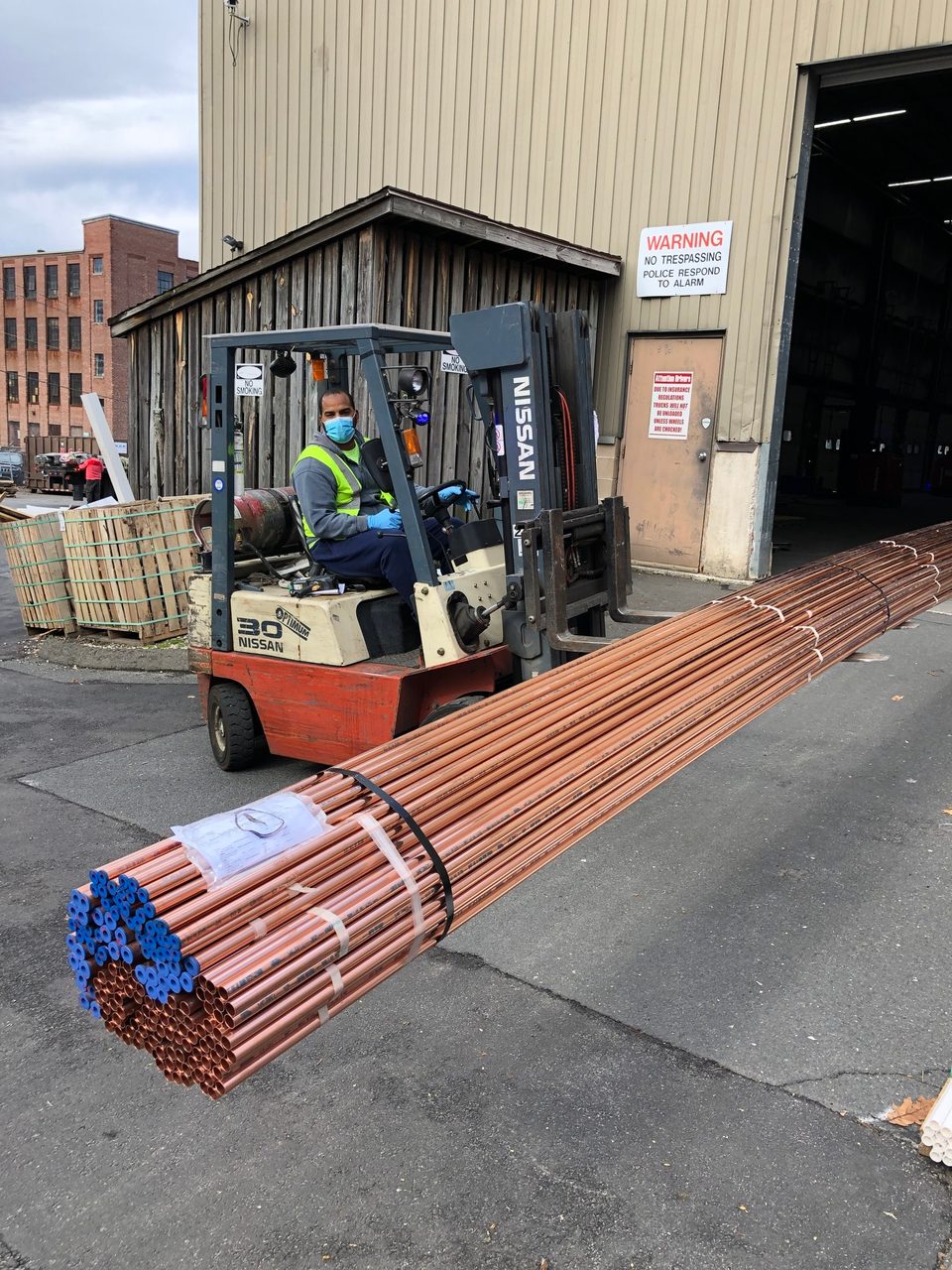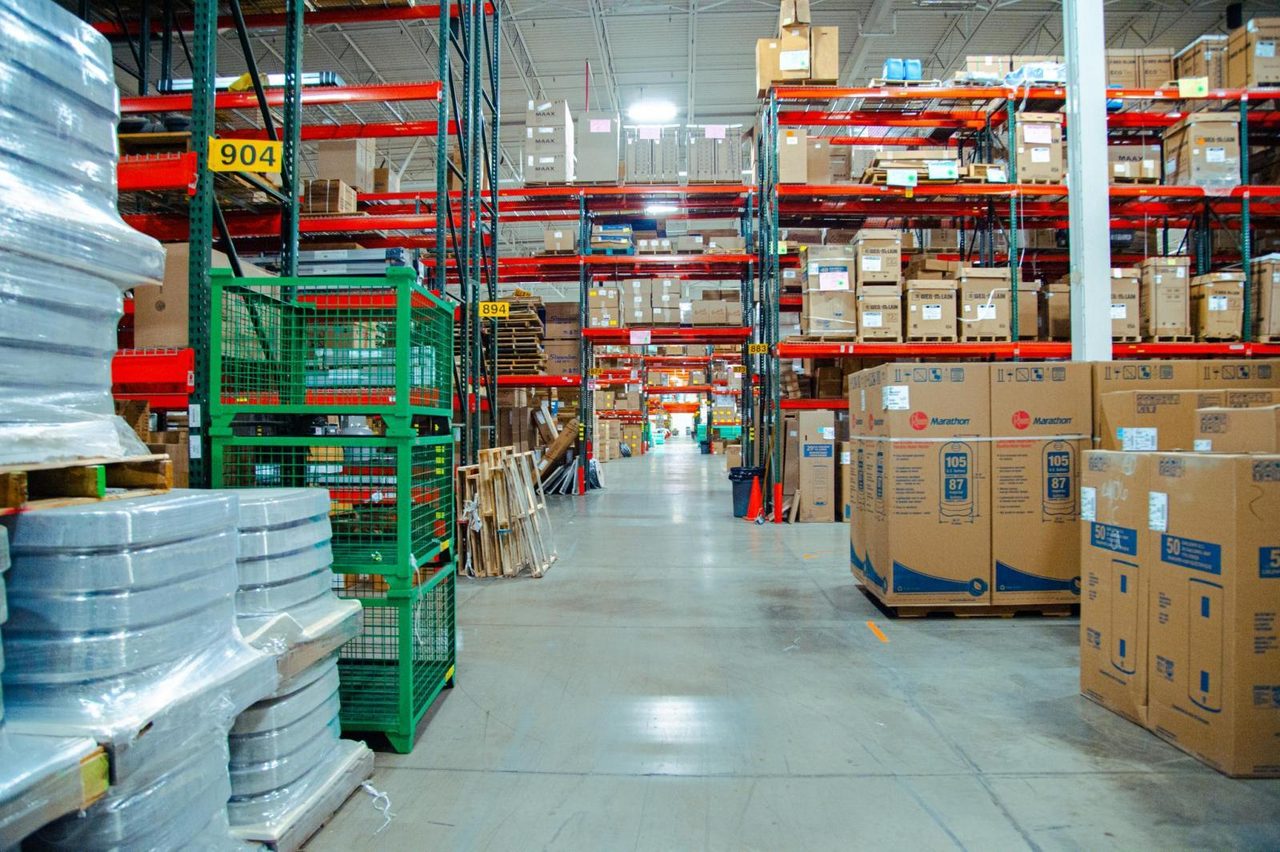Inventory and purchasing
Purchasing and product managers give an update on the state of the PHCP-PVF supply chain.
By Natalie Forster
According to a global supply chain report compiled by IHS Markit, delays and disruptions for manufacturers and deliveries is currently on a higher scale than ever recorded in the company’s more than 30 years of conducting Purchasing Manager Index’s (PMI) — monthly surveys of more than 40 economies worldwide.
Distributors across the U.S. can vouch for that, as supply chain disruptions they endured throughout 2021 have yet to show signs of correction.
Kurt Keller, HVAC product manager for Ohio-based Robertson Heating Supply says lead times and allocations are expected to continue well throughout 2022.
“Some of our vendors have had allocation programs since June of 2021, and more of them are looking to implement allocations now,” Keller says. “The real issue with lead times isn’t the length of time, it’s that they change. Vendors don’t know the definite lead times on certain products, which makes it hard for us to give information and quotes to our customers.”
Long-time buyer for Midwest distributor First Supply, Steve Kuhn, agrees wholeheartedly. “It’s not long lead-times, it’s uncertain lead times,” he explains. “Vendors don’t have answers, and when we do get an estimated time, it’s not guaranteed because backlogs are so long at this point.”
In addition to lead times, according to Eric Weyler, purchasing manager for Waterbury, Connecticut-based Torrco, logistics and sourcing are challenging tasks right now. “These challenges are based on factors out of our control,” he says. “Depending on the sector, I do see the potential for shortened lead times in Q3 or Q4 of 2022 in products such as plastic pipe and fittings.”
Trying something new
Purchasing managers have without a doubt had to adopt new strategies in order to navigate these restraints. Some, for instance, have implemented internal allocations in response to receiving allocations from vendors. “In some cases, we have utilized an internal allocation system,” Keller says. “We have to support our best partners; whether it’s the top 30, 50 or 100, we have to help the customers that have been loyal to us in normal times.”
Distributors are also creating new roles and/or adding more people to their teams.
“One strategy for me has been to delegate a lot more,” Weyler explains. “I was doing too much of the purchasing myself, so we actually added a couple people to the team to handle pricing — with so many price changes we needed more horsepower in that area.”

Torrco Central warehousing facility in Waterbury, Connecticut.
Keller, too, found benefit in personnel changes. “We decided to promote someone within to what we called an expediter role,” he says. “That person works directly for me, as the linchpin between me, the vendors and our sales team. He is more proactively chasing material, trying to push the vendors for material; just trying to get product sent to us in a more proactive manner.”
Kuhn says First Supply’s top strategy has simply been to find alternative solutions. “We’ve had to get creative and find solutions in places we haven’t before,” he says. “Some suppliers aren’t taking on new business, so it’s almost a game of turning rocks until you find a way to get what you need.”
Mutual understanding
Communication between purchasing/inventory managers, vendors and contractor customers has certainly been at an all-time high over the past 24 months. Keller brings up an important point, noting the importance of nurturing relationships along the way.
“You don’t want every call to be ‘Hey, when is my product coming?’” he says. “Vendors are getting hundreds of those questions per day. We’re all in the same boat here. A call just to reinforce these longstanding relationships — check in, see how the person is doing — goes a long way; you don’t want to be the guy who only calls when he needs something.”
Kuhn notes relationships have shifted in certain ways, and it’s important to find a balance between nurturing primary relationships while tapping into secondary relationships.
“With some suppliers not searching for new business, we as a customer have to sell ourselves a little bit more on being a good partner than we have in the past,” he says. “We have to sell our capabilities and prove to be a worthy customer. And even if now isn’t the time to do business with one specific supplier, you keep tapping into that relationship whenever you can.”
Weyler points out that relationships with master distributors have evolved as well. “The priority is always to buy direct from the factory,” he says. “But in so many cases, when the factories haven’t been able to get you product, it’s been invaluable to reach out to those master distributors as they often have millions of dollars worth of product on hand. I think we’re going to see more importers start to broaden their networks to take advantage of these master distributionplayers.”
At the end of the day, all parties at every level of the PHCP-PVF supply chain are having to “figure it out.”

Robertson Heating Supply warehouse in Ohio.
“Our relationships have strengthened because of the mutual understanding we have with our vendors and contractors,” Weyler says. “As distributors we know vendors have been through a lot over the past couple of years. I think we all have a better understanding for each other’s perspectives now and are there to help and accommodate our key partners in any way we can.”
With uncertainty looming in early 2022, Kuhn says if he could tell vendor and contractor partners one thing, it would be that First Supply’s priority hasn’t changed.
“Despite everything, we’re operating as we always have,” he says. “We’re moving forward, we want to do business with you, and we’re invested in you. Listening to the customer and finding out a way to get what they need is still top priority.’
Moving forward, Keller emphasizes the importance of being purposeful with your communication. “Things are tough, but everyone in our sector has been dealing with the same issues, he says. “Be understanding of what others are dealing with; getting frustrated helps no one. When you call on your partners, make sure you’re genuinely checking in on their health, family, etc. before getting into business.”
Through enhanced communication, Weyler points out a silver lining the PHCP-PVF supply chain should take away from supply chain challenges. “Many have been forced to let their guard down and be honest about challenges they’re facing, which has led to more mutual respect and understanding,” he says. “We’re bouncing ideas off of each other more than ever before, having more open communication and learning as we go.”

